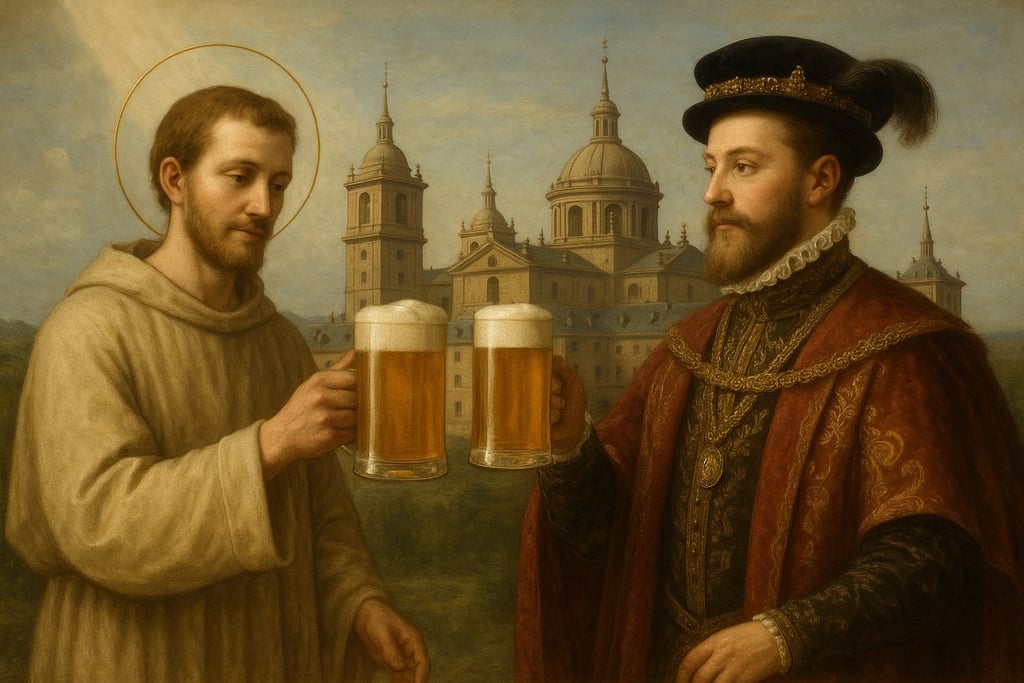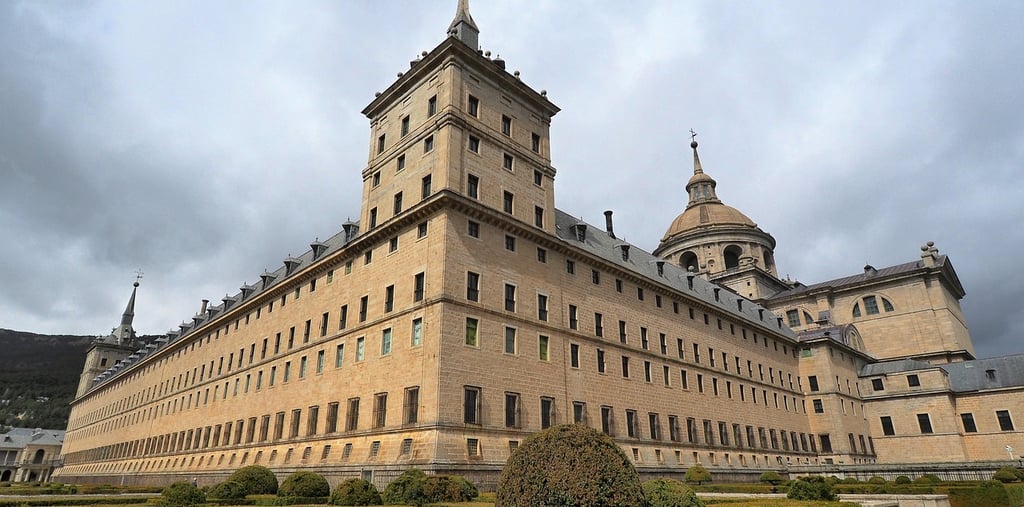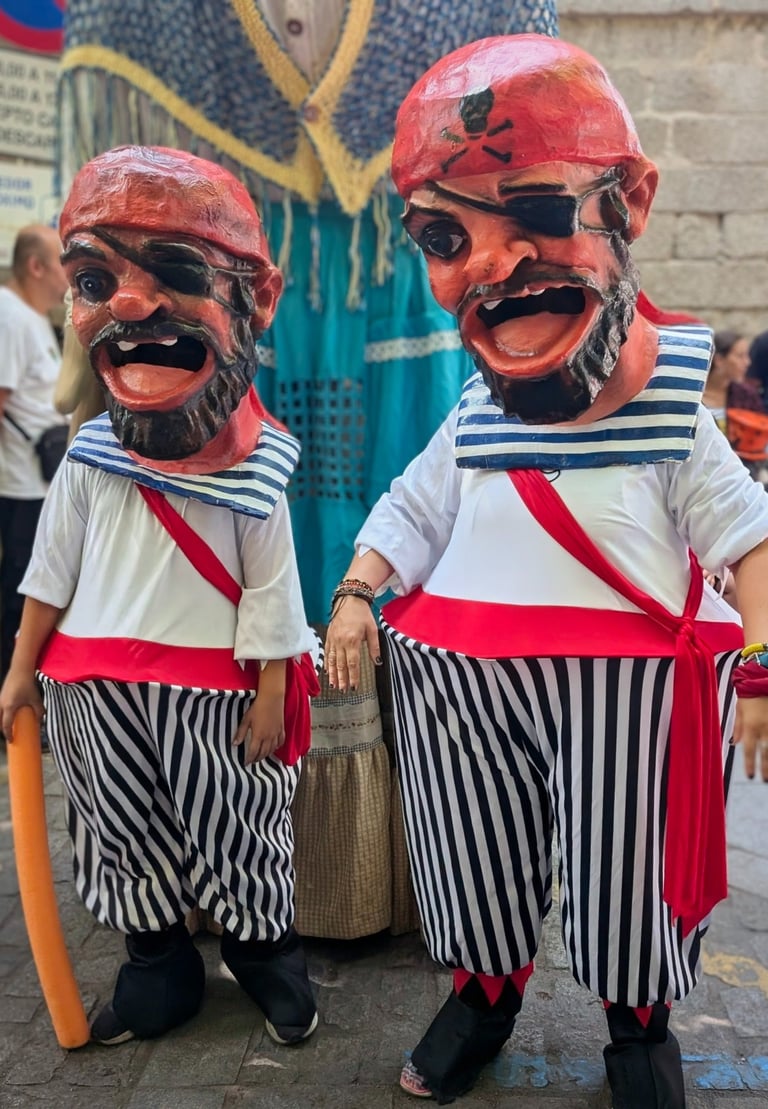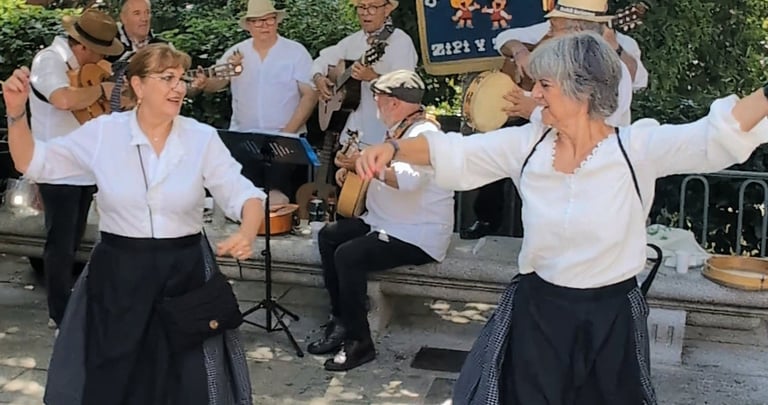Saints, Giants, and Summer Revelry at the Fiestas Patronales in El Escorial
El Escorial proves you don’t need to be in Madrid to dive into a fiesta. From saintly processions to giants dancing through the streets, local folk bands and icy cañas in hand, August here is the perfect blend of tradition, ceremony, and sun-soaked shenanigans.
8/18/20254 min read


August Festivals: From Madrid to the Mountains
August in Madrid is fiesta season in the south of the city. First comes Las Fiestas de San Cayetano followed by San Lorenzo, both in Lavapiés, while wrapping up the fiestas in La Latina with Las Fiestas de la Paloma. Lavapiés was my home for nearly a decade, so this year something different was on the agenda, the Fiestas Patronales de San Lorenzo de El Escorial, about an hour northwest of the city. Fewer crowds, more nature, and a celebration where the streets are alive with personality.
How Divine Intervention Put El Escorial on the Map
El Escorial found its way on the map by King Philip II. In 1557, Philip II scored his first major victory as king at the Battle of Saint Quentin. Spain and its allies annihilated the French, and the timing was perfect as it coincided with the feast of Saint Lawrence (aka San Lorenzo).
For Philip this was divine intervention, and he swore to honor the saint. So rather than build a little chapel to show his token of affection, he took it to the next level and built El Escorial. The monastery in the mountains was basically Philip’s way of saying, “Thanks for the helping hand San Lorenzo, and to show my gratitude I will construct a giant granite monastery/fortress/place in your honor and to show the world that Spain is on the rise.”
San Lorenzo: El Escorial’s Hotline to Heaven
Every city in Spain has a patron saint that watches over and protects the community. Madrid, as you may recall, has San Isidro. From the moment that Philip II erected the monastery, San Lorenzo became the patron saint of El Escorial.
San Lorenzo was the ultimate middleman, the go-between for a king who wanted to stay in God’s good graces and a village that needed someone upstairs to watch their backs. He was the holy hotline for everything you didn’t want to deal with: plagues, invasions, bad harvests, general misfortunes. If heaven had a customer service department, San Lorenzo would be the guy answering the calls.
August 10th, celebrates his martyrdom in 258 AD. The bonus is that his day of remembrance also coincides with the Perseid meteor shower, also known as Las Lágrimas de San Lorenzo, the Tears of San Lorenzo. Legend says these meteors are the saint’s tears raining down from heaven. Seems fitting, because if San Lorenzo is watching over modern society, he's likely to be bawling his eyes out.




Medieval Frights and Festival Delights
Back in the 1500's, San Lorenzo was celebrated with monks and masses. Today, the celebration continues, but with gigantes y cabezudos, concerts, and dancing thanks to the people's lust for life, who decided that honoring the patron saint needed more than just incense and solemn processions.
Similar to the devilish characters in El Colacho, the medieval era lends its hand to the modern era through gigantes y cabezudos. They were originally used as medieval scare tactics, policing the party and keeping the people in line. Today, they are there for sheer entertainment.
Gigantes are giant figurines that measure several meters high and are carried by someone, who spins and dances to the music of the band following behind them. Cabezudos are people in costume wearing oversized heads, typically chasing children and whacking them with a sack of spongy foam-like material.
We arrived just as the gigantes y cabezudos were preparing to parade through the streets dancing to the Escofolk bands playing their music behind them. We chased the parade to the main square where the gigantes y cabezudos frolicked and danced and stuck around for a few more hours to listen to the bands play their music while locals danced with their cañas in hand throughout the streets.
You don’t need Madrid to party like a Saint
Although we only caught one day of the festival, which runs for a week straight, and while the Gigantes might steal the spotlight, San Lorenzo steals the soul. You can still find him being paraded through the streets of the village, a reminder that saints age better than governments.


Although San Cayetano packs the streets, San Lorenzo de El Escorial honors its saint the way Luciano de Castro intended, with the right balance of sanctity and shenanigans. Sometimes you just need to swap fumes for fresh air to find a fiesta that hasn't lost its soul.
The saints can’t hear you, but I can! Leave a comment.
Then go find the Escofolk, jotas, gigantes and cabezudo waiting for you on Hungry Culture's YouTube channel
